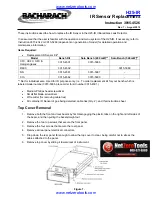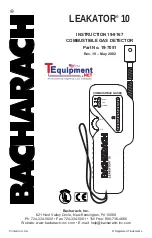
14
23
DISC MODE
Do not search in the DISC mode unless the area is heavily littered with
iron trash. In most situations you want to hunt in the NORMAL or BOOST
modes and then switch to the DISC mode to identify a strong target
response. The DISC mode will generally not identify weak target sounds
currently. Targets that have been unearthed can also be checked for
their gold content by using the DISC mode. Swing the object past the
searchcoil, holding it in your fingers or in a plastic scoop. If it is a “hot
rock” or small ferrous object, there will be no sound. Some iron objects
chirp or click. If it is nonferrous metal such as gold, your GoldBug2 will
give a solid “beep.”
Unlike the BOOST and NORMAL modes, the DISC mode operates
without an audible threshold hum.
NOTE: Some faint static and occasional chatter is normal in this
mode. If you are running your sensitivity too high for ground conditions
(heavy mineralization, trash and or hot rocks) you may experience
a constant, loud chatter as you sweep.
BOOST MODE
In this mode, weak signals are louder than in the NORMAL mode, but
maximum loudness of strong signals is the same. The primary purpose
of the BOOST mode is to help you hear weak signals when there is
interfering environmental noise from wind, mining equipment, vehicles,
etc. Also, if you prefer using the speaker (most people use headphones),
you may prefer the BOOST mode, even in quiet conditions.
Hunting in the BOOST mode is best when the area has few trash items,
hot rocks and low ground mineralization. In areas with many false signals,
the BOOST mode will amplify them as well as signals from gold nuggets.
The BOOST mode can also be used to recheck a disappearing signal,
or to check a faint signal to see if it sounds like a hot rock.
MODE AND MINERALIZATION BUTTON SELECTION (continued)
TARGET RECOVERY (continued)
NOTE: Because of the extreme sensitivity of the GoldBug2 searchcoil,
the electrical charge of your hand may be picked up as a target. Sounds
incredible, but it is true. Therefore, if you pinpoint a target and it sounds
small, do not try to identify it by passing a handful of dirt in front of the
searchcoil. The signal you hear may be your hand. Instead, use the
sprinkle method. Test the sensitivity of your GoldBug2 to your hand by
waving your empty hand in front of the searchcoil. If it is a large target,
you may use your hand. The loud signal from a large target will mask
any signal produced by your hand.
You can find an elusive target in a handful of dirt by pouring it on top
of your GoldBug2 searchcoil. If the first handful does not produce a
target, pinpoint your target again and grab another, sprinkle it on the
searchcoil, and repeat the process until you have identified your target
(hopefully a gold nugget). Remember, many gold nuggets look just like
a brown clump of dirt until you get them home and wash them off. Only
your GoldBug2 knows the difference in the field.
5
.
If the target sounds small (faint and soft), sprinkle some of
the target dirt on top of the GoldBug2 searchcoil. If you get a
response, you can set aside the rest of the dirt in your hand and
concentrate on the dirt on your coil. If you get no response from
your coil, sprinkle more dirt on the coil until you hear a signal.
By repeating this process several times you should be able to
identify even a very small target.
6
.
Recheck your target area to make sure you are not leaving a
second target behind.
7
.
Scrape all loose dirt back in the hole and move on only after
the area appears as it was before you got there.















































